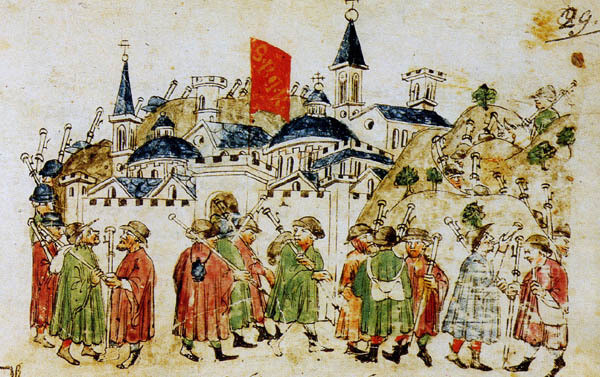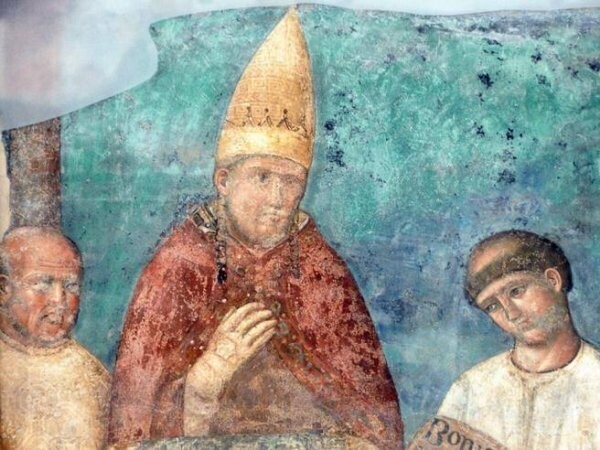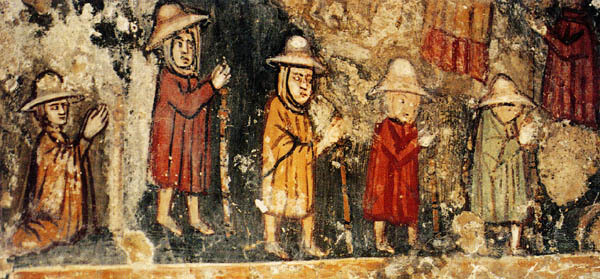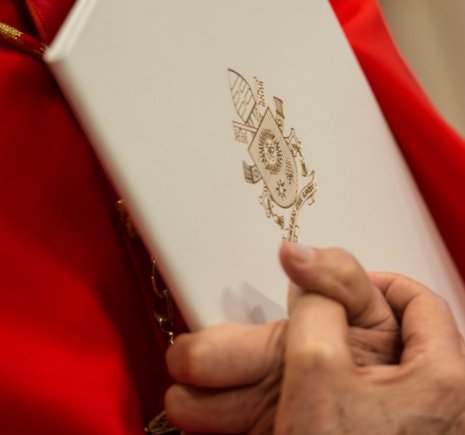The Jubilee: a story that began in 1300'
by OMNIA Vatican&Rome - published on 05/10/2024
The Jubilee or Holy Year is the period during which the Pope grants plenary indulgence to the faithful who travel to Rome. This year of grace of the Lord, since his first indiction, has always represented a unique opportunity during which to receive the remission of one's sins and be reconciled with God.
From 24 December 2024, the city of Rome will host the 27th Jubilee in history and the second in the Pontificate of Pope Francis. A special year, a Jubilee of Hope, during which the faithful will be able to ask for plenary indulgence. Commonly called the "Holy Year", not only because it begins, unfolds and ends with solemn sacred rites, but also because it is intended to promote holiness of life.
Among the ancient Jews this particular year was announced with a ram's horn which in Hebrew is called Yōbēl from which the word Jubilee derives. Its origins are to be linked to the Old Testament within which the law of Moses had set a particular year for the Jewish people: "You will declare the fiftieth year holy and proclaim liberation in the country for all its inhabitants. It will be a jubilee for you: each of you will return to his property and his family. You shall neither sow nor reap what the fields produce by themselves, nor harvest the unpruned vineyards. In this year of the jubilee, each will return to possess his own" (Book of Leviticus). The anniversary soon merged into Christian tradition: it was Boniface VIII who announced the first Holy Year in 1300 with the bull “Antiquorum habet fida relatio”.

Pilgrims to Rome during the Holy Year of 1300 A.C.
Romans who visit the basilicas of St. Peter and St. Paul thirty times within the year will be granted plenary indulgence while for pilgrims arriving from outside fifteen visits will be sufficient. The indulgence will be granted to everyone even to those who, due to reasons of force majeure including death during the trip, are unable to complete the visits. Furthermore, the frequency of the Jubilee every one hundred years will be established in the bull. According to the chronicles of the time, Rome was literally invaded by pilgrims coming from all over, traveling up to forty kilometers a day to venerate the sacred relics, the wood of the Cross and the nails, the veil of Veronica, the holy ladder and other remains. The romeo, this is the name of the pilgrim who will go on a pilgrimage to Rome, is dressed in a habit, sandals on his feet, a short cloak called "pellegrina" and a hat tied under his chin on which the distinctive signs of his travel: the shell that refers to Santiago de Compostela, the palm tree symbol of the Holy Land and the images of Saints Peter and Paul for Rome.
Among the important figures who took part in the Jubilee of 1300 we find Giotto who was commissioned to fresco the loggia of blessings in the Vatican, built specifically by Boniface VIII for the Jubilee, Cimabue and Dante himself who remembered the event in some verses of Paradise from the “Divine Comedy”. Following the transfer of the Papal See to Avignon, the need was felt to call the second Jubilee 50 years after the first. Clement VI agreed and set the deadline for fifty years. Saint John in Lateran was also added to the basilicas of St. Peter and St. Paul Outside the Walls as a Jubilee stop. Subsequently Urban VI decided to move the cadence to 33 years in reference to the duration of Jesus' earthly life. Thus we arrive at the end of the Western schism when Martin V, during the Jubilee of 1425, introduced an important innovation with the opening of the Holy Door in Saint John in Lateran. We therefore see how the Jubilee frequency has changed over time: at the beginning it was every 100 years, reduced to 50 years in 1343 by Clement VI and to 25 in 1470 by Paul II.

Bonifacio VIII in the Giotto masterpiece - Basilica of San Giovanni in Laterano in Rome
Undoubtedly the Jubilee has always represented a great event both from a spiritual and social point of view. The most important artists of the time travelled to Rome such as Verrocchio, Botticelli, Perugino just to name a few. Above all, Sixtus IV wanted Rome to be embellished for the occasion by commissioning important works such as the Sistine Chapel and the Sisto bridge over the Tiber. The Napoleonic wars prevented the celebrations of the Holy Year from 1800 to 1850, which resumed in 1875 following the inclusion of Rome to the Kingdom of Italy.
After this brief excursus we arrive at today and what we will experience in the next months.
The Holy Father has chosen "Pilgrims of Hope" as the motto of the 2025 Jubilee as an invitation to always keep the torch of hope lit. The Bull of indiction of the Ordinary Jubilee of the year 2025 - SPES NON CONFUNDIT. “Hope does not disappoint” (Rom 5:5) -, announced by Pope Francis on 9 May at St. Peter's Basilica on the occasion of the Solemnity of the Ascension, reports the dates of the beginning and end of the Holy Year as well as the theme that will act as a common thread. After the opening of the Holy Door of St. Peter's Basilica on 24 December, numerous events will follow which will involve young people, the world of communication, people with disabilities, just to name a few.
For all those who want to fully experience the Jubilee, Omnia Vatican&Rome, a reality born within Vicariato di Roma - Opera Romana Pellegrinaggi, will use its experience to offer pilgrims the right combination that can guide him to discover the cultural heritage of the city of Rome without losing the main objective of living an experience of faith. More information about the Jubilee of Rome are available online at Jubilee 2025. Through itineraries in Rome and tailor-made experiences, accomodation proposals designed for both groups and individuals, it will be possible to experience this year of grace together.

Pilgrims to Rome

